Now, towards the bumpy
path 2019 !
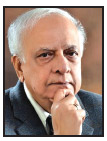 Hari Jaisingh
Hari Jaisingh
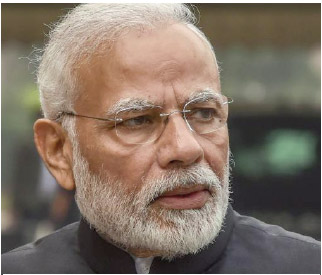 Narendra Modi
Looking beyond the historic December 11 State elections verdict in
a major part of the Hindi heartland, my main focus now is on the
upcoming national poll in May this year. I believe that the nation
is bigger than an individual, howsoever big or low his
performance. The yardstick of assessment of Prime Minister
Narendra Modi in history would be: whether he has delivered his
various promises on the ground. I am, therefore, not giving any personal
judgment on Prime Minister Modi and his party BJP. I leave that to history.
Still, as an independent observer of national affairs for decades, my job is to
evaluate objectively four and a half years of his innings at the helm of our
great nation.
Narendra Modi
Looking beyond the historic December 11 State elections verdict in
a major part of the Hindi heartland, my main focus now is on the
upcoming national poll in May this year. I believe that the nation
is bigger than an individual, howsoever big or low his
performance. The yardstick of assessment of Prime Minister
Narendra Modi in history would be: whether he has delivered his
various promises on the ground. I am, therefore, not giving any personal
judgment on Prime Minister Modi and his party BJP. I leave that to history.
Still, as an independent observer of national affairs for decades, my job is to
evaluate objectively four and a half years of his innings at the helm of our
great nation.
The questions I propose to raise and look into as objectively as possible
are: how has been his delivery on the ground for the poor, the have-nots,
tribals and the deprived or denied sections of the population, including the
minorities?
During his early months in power I was impressed by his “Change India”
campaign. Still, I kept my fingers crossed just to observe the direction he
takes for changing the face of India. I have no malice or prejudice against any
political outfit that works within the parameters of the Constitution and does
an honest job for a better future of the country and all sections of the people
without any discrimination in all an all- inclusive development model with
right priorities which PM Modi publicly talked about.
However, somewhere down the line, his focus went astray. So were his
priorities.
 L K Advani, Dr Murli Manohar Joshi, Shatrughan Sinha and Yashwant Sinha
L K Advani, Dr Murli Manohar Joshi, Shatrughan Sinha and Yashwant Sinha
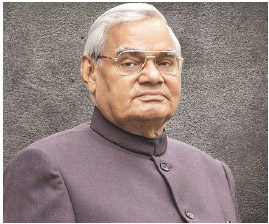 Atal Behari Vajpayee
I expect the person holding the country’s high office to rise above
personal, party and partisan considerations on key public issues such as
growth, education, health care and employment generation in the true spirit
of sabha ka saath, sabha ke vikaas. Has PM Modi proved to be true to his own words? The Prime Minister’s
problem is his rhetoric.
Atal Behari Vajpayee
I expect the person holding the country’s high office to rise above
personal, party and partisan considerations on key public issues such as
growth, education, health care and employment generation in the true spirit
of sabha ka saath, sabha ke vikaas. Has PM Modi proved to be true to his own words? The Prime Minister’s
problem is his rhetoric.
He
specializes in making promises
without any time-frame at public
rallies in the hope that the people
would go on believing him as a great
performer!
Subsequent events have,
however, put him on the wrong side
of his own agenda. I know that a
large section of the Sangh Parivar
would not accept my views on
misplaced priorities in
development. Another problem
with the PM was his inability to take
non-BJP leaders to take along his
march forward in Federal India.
Equally disquieting was the way he
sidelined the party’s stalwarts like L
K Advani, Dr Murli Manohar Joshi,
Yashwant Sinha, Shatrughan Sinha Narendra Modi ought to have
followed Atal Behari Vajpayee. I
have conveyed this in my writings. I
believe had Modi followed the
footsteps of Vajpayee and got a
better grip of rural-urban ground
realities, his popularity graph would
not have gone down as we saw in
the five state polls.
etc.
I am of the view that
the Prime Minister has
to conduct himself as
an all-India leader and
make every Chief
Minister an active
participant in national
affairs of governance.
Once this basic trust is
evolved, the federal
working can become a
painless exercise. This
“ideal situation” cannot
be applied in the
current setting of rising
bitterness and
acrimony between the
BJP and the Congress
and other political
parties across our
geographical divide.
Narendra Modi could have also
avoided being pro-rich in a poor
developing country like India. What
is more, he has mostly been foreignbound,
which kept him away from
realities of rural India.
For instance,
in an agriculture-based rural
economy, he did not bother to visit
even once the farmers’ families,
whose main bread-earners had
committed suicides in the face of
their rising debt burden! This harsh
fact has to be seen as part of the
psychological factor at play which is,
naturally, exploited by local and
state politicians against the Central
authority. We have seen this
happening in the December 11
elections.
On principle, I do not advocate
dilution of Central authority.
It
needs to be appreciated that a
strong Centre can only be an offshoot
of evolutionary development,
not as an imposition from above.
Authoritarianism surely does not
strengthen Central authority.
Prime
Minister Modi cannot ignore certain
sensitivities of democratic
functioning, including silent voices
of dissent within his own party and
beyond.
Equally disturbing is his playing
with institutional autonomy as part
of his characteristic to centralize all
powers in his own hands or through
the PMO. This goes against the spirit
of democracy and constitutional
norms.
In the Indian situation, a strong
Centre has to be based on mutual
trust and confidence. And a strong
Centre cannot be sustained if
federal units are weak. This is a
matter of evolving a system in which
the people ought to have a stake in
having a strong Centre as well as
strong states. This cannot be a
matter of political pulls and
counter-pulls. What is relevant here
is the working of the federal
structure harmoniously in the face
of changing problems. What is
needed is a Cooperative Federalism,
which the Prime Minister once
talked about to my delight.
It also must be said that
appointment of “political governors”
does not help the process of
evolution of healthy norms. We
have seen this under varied
Congress regimes as we observe
today under the Modi leadership.
I am of the view that the Prime
Minister has to conduct himself as
an all-India leader and make every
Chief Minister an active participant
in national affairs of governance.
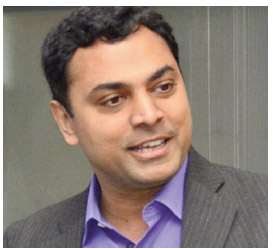 Krishnamurthy Subramanian
Once this basic trust is evolved, the
federal working can become a
painless exercise. This “ideal
situation” cannot be applied in the
current setting of rising bitterness
and acrimony between the BJP and
the Congress and other political
parties across our geographical
divide.
Krishnamurthy Subramanian
Once this basic trust is evolved, the
federal working can become a
painless exercise. This “ideal
situation” cannot be applied in the
current setting of rising bitterness
and acrimony between the BJP and
the Congress and other political
parties across our geographical
divide.
As it is, the Indian dilemma is the
rise of small-time politicians who
might be lacking national and
rational perspectives on socio-economic and political matters.
Take the case of demonetization.
I believe that this decision played
havoc with certain critical areas of
rural and urban economics,
especially in the agriculture sector,
small-scale industrial units as well
as on the job front. It is a different
matter that the Modi government
has now brought Professor
Krishnamurthy Subramanian as
new Chief Economic Adviser in place
of Arvind Subramaniam.
He had
hailed the demonetization as a
“revolutionary measure”. Going by
ground realities, I won’t endorse
this view.
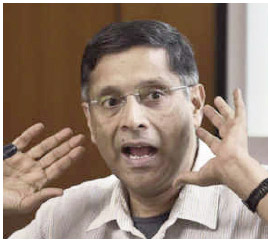 Arvind Subramaniam
Relevant facts are simple.
Economic development so far has
been tilted in favour of a small wellto-
do group, sharpening the
contrast between the poor and the
rich in many areas. I believe that
greater involvement of the people in
development activities can be
ensured only through
decentralization of power and not by centralization of politicoadministrative
and other powers by
the Supremo at the Centre.
Today, the Modi government’s
major challenges on the economic
front are fuel prices, falling rupee
value, public sector banks, the RBI,
current account deficit, fiscal deficit
and big gaps in rural farm economy.
Arvind Subramaniam
Relevant facts are simple.
Economic development so far has
been tilted in favour of a small wellto-
do group, sharpening the
contrast between the poor and the
rich in many areas. I believe that
greater involvement of the people in
development activities can be
ensured only through
decentralization of power and not by centralization of politicoadministrative
and other powers by
the Supremo at the Centre.
Today, the Modi government’s
major challenges on the economic
front are fuel prices, falling rupee
value, public sector banks, the RBI,
current account deficit, fiscal deficit
and big gaps in rural farm economy.
No one can overlook the recent
massive farmers’ rally in Delhi. More
than 50,000 farmers representing
nearly 200 farmer groups marched
towards Parliament House.
Something has surely gone
wrong with PM Modi
administration’s promise of 50 per
cent profit over the cost of
production, without caring to
revamp the marketing
infrastructure and strategies to put
the shaky rural economy in proper
shape. As Darshan Pal, a rice and
wheat farmer from Punjab put it,
“The calculation of support price
that the government fixes is erratic
and erroneous. The government
should include actual rent of land,
interest on capital invested and
skilled labour rates while calculating
the cost of cultivation of various
crops”. I agree with Darshan Pal. No
wonder, millions of farmers are left
at the mercy of middlemen who
seem to be thriving most.
We also must not forget the
harsh fact that nearly 800 million
people of India’s 1.3 billion depend
directly or indirectly on farming,
with agriculture accounting for 10
per cent of the national economy.
It is also a fact that farmers
fetched about Rs 360 billion less last
crop season due to lower market
prices of commodities, including
rice, corn, cotton, soya bean and
some pulses, than what they would
have got by selling at officially
specified minimum support prices.
Herein lies PM Modi’s tragedy.
Had
he applied his mind fully on
farmers’ problems, the state of the
nation would not have been seen
lopsided in development.
Looking back, Narendra Modi
was elected in May 2014 after campaigning on the promise of
reforming the economy and
creating more jobs. But, the moot
question is: what happened to those
high promises? No significant
reforms have materialized and
demonetization and complex sales
tax regime have only slowed down
economic growth.
The point is: who would care for
about 5 million youngsters who
enter the work force every year? In
2017, only 1.43 million new jobs
were added, according to an
independent Think Tank.
As PM Modi is just a few
months away from the 2019 polls,
it is for him to decide about his
last minute priorities: Ram
Mandir or unfulfilled
development agenda in tune with
his promises to the people and
the party’s manifesto? I am a
Hindu. Lord Ram is as dear to my
heart as it may be to the Sangh
Parivar people. But equally dear
to my heart is high idealism and
principles of Lord Ram which
seem to have got lost in the petty
politics of our leaders today.
There is need for soul-searching
in this regard by those who
remember the construction of Ram
Temple in Ayodhya on the eve of the
general election. It is for the Sangh
Parivar, PM Modi and his advisors
to decide whether they wish to
follow the parliamentary law route
or the path of the highest court of
the land in absence of a mutually
agreed consensus path for Ram
Mandir !
If the Sangh Parivar and PM Modi
learn to look at the country’s
sensitive matters in a larger liberal
perspective, the Ayodhya Ram
Mandir issue can be resolved
amicably. In this context, they
would do well to just look at the
1993 Narasimha Rao government’s
plan through the consensus route.
History rarely repeats itself among
historically conscious people. As a
liberal vibrant democracy, India
cannot afford to repeat mistakes of
the past.




 Hari Jaisingh
Hari Jaisingh
 Narendra Modi
Narendra Modi
 L K Advani, Dr Murli Manohar Joshi, Shatrughan Sinha and Yashwant Sinha
L K Advani, Dr Murli Manohar Joshi, Shatrughan Sinha and Yashwant Sinha
 Atal Behari Vajpayee
Atal Behari Vajpayee
 Krishnamurthy Subramanian
Krishnamurthy Subramanian
 Arvind Subramaniam
Arvind Subramaniam